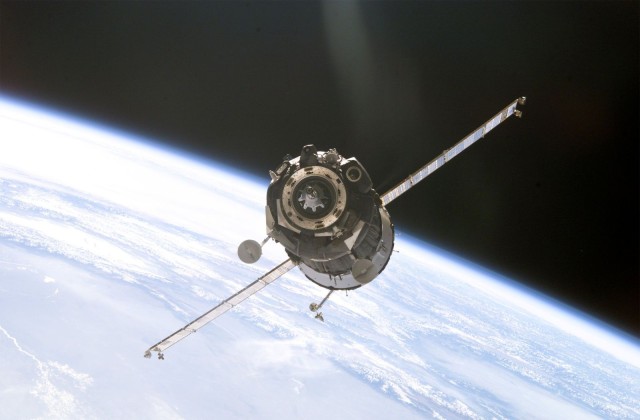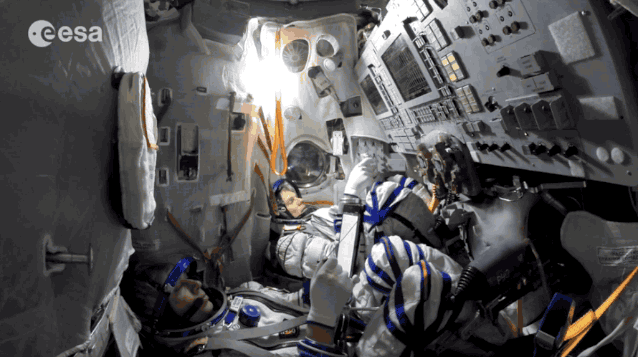A first-class flight in a Soyuz space capsule is rocky, reliable and rather snug. An astronaut sits in a semi-fetal position, works the controls with a stick and feels a pretty heavy G load, especially on reentry.
So imagine if a fire breaks out on the Soyuz spacecraft. There’s no extinguisher, no exit and no help to call.
ESA astronaut Andreas Mogensen narrated a video showing he and Russian cosmonaut Sergei Volkov going through a simulated fire on a capsule to train for an upcoming flight to the International Space Station.

Photo: NASA
A fire aboard a spacecraft is one of the most catastrophic situations a crew can face. The crew of the space station Mir nearly had to evacuate following a fire in 1997 that burned for several minutes and began to melt metal before finally getting extinguished. A flash fire killed the very first Apollo crew during training on the launch pad as sparks from an electrical short in the capsule caught fire in the oxygen-rich environment.
In space, “You can’t go outside, you’re in a very small volume and your escape options are limited,” NASA fire expert David Urban told Universe Today in 2013. “Your survival options are limited. The pressure can’t escape easily, and the heat stays there, and the toxic products are there as well.”
Aboard the International Space Station, crews conduct a fire drill every 10 weeks and have two different fire suppression systems, including a water foam system.
But on Soyuz, which is meant for short trips to and from the space station, astronauts put down their face shields to avoid smoke inhalation and quickly decide on three options to shut down a fire.
- Astonauts first switch off cabin fans and ventilation to stop the forced convection of air inside, Mogensen said. In the weightlessness of space, natural convection does not occur so the hope with this step is for the fire to use up oxygen in the vicinity of its source and die down on its own.
- The second procedure is for flyers to switch off the electric supply for all onboard systems to cut the fire off at the source.
- The final procedure is the most drastic. If fire appears to be out of control, the astronauts then must depressurize the cabin. They act quickly to secure space suits for any openings, depressurize the cabin and prepared for an emergency decent and reentry. Mogensen said the crew has to do this within 125 minutes or risk dying from heat exhaustion.
The suits hold just enough oxygen for breathing, but not enough to cool the suits. Click here to see the astronauts train through a simulated fire.
Source: space.com


